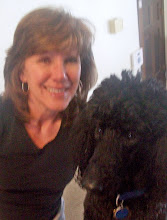This activity involved conducting a running records/miscue analysis on two second language learners analyzing miscues for M-meaning, S-syntax, and V-visual cues. Are there some features of the errors that reflect the first language? Are there miscues that are universal to all readers?
Every Tuesday and Thursday afternoon, I have the privilege of tutoring international students from around the world at our local community college in learning English as a second language. Unfortunately, I didn't have access to the opportunity to perform my running records until Thursday; so, I apologize for posting this blog a day late. Nevertheless, each of the students which I worked with have only been in our country for between six and seven months. I actually performed four running records this afternoon using a text which was more appropriate for young adult (18-21 years) learners. The book was nonfiction and was based on health related concepts. Conversation is still halting for one student, Muhammad, in particular.
Another student, Juliam, must translate many of the key words in the text's sentences. For example, "Different people like different things. Pablo loves to swim, but his friend Jeff is afraid of water" was difficult for my Arabic students to decipher--just what is a "Pablo?" This was a miscue which I feel reflects their first language base which is, of course, Arabic. I found that the Arabic students had much more difficulty in reading orally than Spanish students. I note that they both looked at the pictures for visual aid; however, our culture differs so greatly from theirs in everything from manner of dress to approaches to learning literacy in Saudi Arabian classrooms. Furthermore, I became aware that each Arabic student needed additional grammar and phonics instruction. I would definitely focus on these two areas as well as additional read alouds. Currently, all four of these students are in an intensive English learning program which includes daily blocks of grammar, writing, reading, listening/speaking, and conversation with native English speakers. Both Arabic students commented they did not like to write. They only want to read or speak--writing is very taxing at this point in time.
In total, I recognized that there were numerous self-corrections (i.e. angry for anger, etc.), an extensive amount of very halting reading of words as well as sentences, and a definite lack of comprehension of text. It was all my readers could do to decode the words to get through the text. I do believe that many of the errors students made during reading were the same types of errors I see in primary aged students just learning to read and write in their native tongue. In order to support/scaffold these students toward reading proficiency, I would work with them on their phonics, constructing meaning, and developing fluency. Moreover, I would model excellent writing skills to these students, too. Additional reading/writing in English which connects to their current Arabic/Spanish cultural understandings would be tremendously helpful. Overall, this was an excellent experience which causes me to believe that whether native or second language learner, there is an amazing similarity in phases of developing literacy skills.
Subscribe to:
Post Comments (Atom)

No comments:
Post a Comment